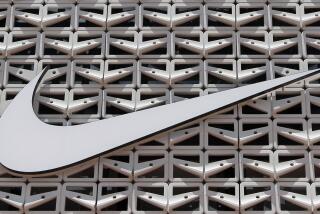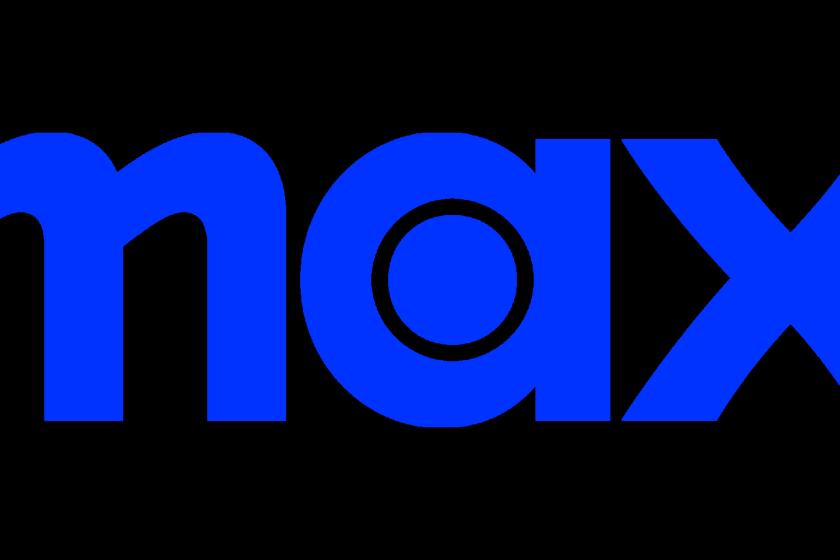Nike’s Profit Increases 32%
- Share via
Nike Inc. said Monday that fiscal first-quarter profit rose 32%, helped by sales of new lines of Shox sneakers and lower marketing costs. Its shares surged after Nike’s global orders rose at the fastest pace in at least 10 years.
Net income increased to $432.3 million, or $1.61 a share, in the quarter ended Aug. 31 from $326.8 million, or $1.21, a year earlier. Revenue climbed 8.4% to $3.86 billion, Beaverton, Ore.-based Nike said.
Sales of $100 Shox Cog running shoes helped lift revenue 8% in the U.S. and 13% in Asia. Worldwide orders rose 11%, exceeding analysts’ estimates. Marketing and other expenses fell from a year earlier when Nike increased spending for the Summer Olympics.
“Nike consistently comes out with products that people want to buy,” said Bob Sweet, an analyst at Hammond, Ind.-based Horizon Investment Services. “What’s also crucial is the company’s ability to cut costs.”
Nike exceeded the $1.42-a-share profit estimate of analysts surveyed by Thomson Financial. Nike has exceeded analysts’ estimates for at least five consecutive quarters. Chief Executive Bill Perez, who took over in December from Nike founder Phil Knight, has been responsible for the last two quarters.
The company’s shares had their biggest gain this year, rising $4.99, or 6.4%, to $83.45.
Nike sales have risen an average of about 13% in the last two years, helped by higher-priced and performance shoes. That compares with about a 10% rise at Reebok International Ltd. and sales that were little changed at Adidas-Salomon. Adidas, the No. 2 athletic-shoe maker, agreed to buy Reebok for $3.8 billion last month to narrow the gap with No. 1 Nike.
Perez, 58, is expanding with acquired brands such as Converse, Cole Haan and Starter as well as adding lines of established shoes.
In 2000, Nike introduced Shox shoes, which Nike said took 16 years to develop and feature spring-like heel support. Nike expanded the line with Cog running shoes and Lethal basketball shoes last quarter. Nike Free, which mimics running barefoot, the Michael Jordan line of products and Air Force One casual shoes also spurred sales. Nike next year will unveil shoes featuring a technology it calls Air Max 360.
Sales in the U.S. surged to $1.5 billion. In Asia, they increased to $459.6 million. Sales in the Americas jumped 32% to $213.7 million. In Europe, revenue rose 5% to $1.22 billion, the company said Monday. Sales of mostly non-Nike brands, including Converse, Hurley and Cole Haan increased 6% to $462.3 million.
“Even in a more difficult consumer spending environment, we believe that the Nike brand is well positioned and that its global prospects remain strong,” wrote New York-based analyst Robert Drbul of Lehman Bros.
But some analysts questioned whether the market for expensive shoes could withstand an economic downturn if rising fuel prices continued to pinch consumer spending.
U.S. consumer confidence dropped to a 13-year low in early September, battered by record gasoline prices and Hurricane Katrina.
“Certainly buying a high-price athletic shoe is not necessarily a consumer staple,” said Jamelah Leddy, an analyst with McAdams Wright Ragen.
Nike has expanded beyond traditional athletic-shoe stores into sporting goods and general merchandise chains, which helped boost U.S. sales, said John Shanley, an analyst with Susquehanna Financial Group.
Apparel sales also rebounded thanks to demand for its namesake brand as well as Jordan merchandise, which made up for lost business when Nike’s contract with the National Basketball Assn. expired last year.
Bloomberg News and Reuters were used in compiling this report.
More to Read
Inside the business of entertainment
The Wide Shot brings you news, analysis and insights on everything from streaming wars to production — and what it all means for the future.
You may occasionally receive promotional content from the Los Angeles Times.










